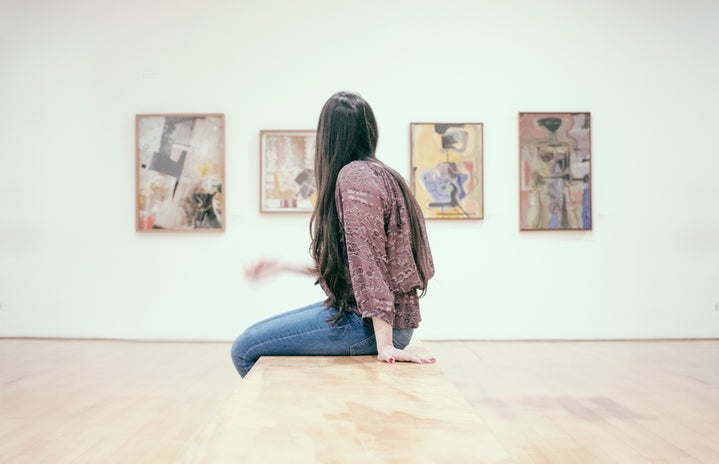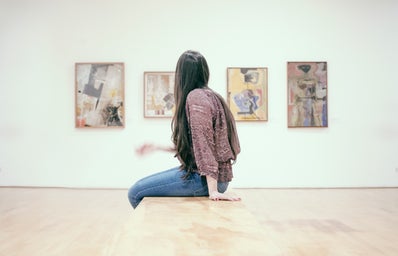For most Cal Poly students, the main motive behind an evening trip to Dexter Lawn is dinner at Subway. But a new attraction just opened next door: the multi-media Strange Birds gallery exhibit by interdisciplinary artist, Heidi Neilson. This exhibit draws inspiration from the invisible, yet ever-present satellites – nicknamed “birds” – that circle our planet.
I attended the exhibit’s opening reception on November 7, and I had the privilege of hearing the artist herself speak. While viewers enjoyed refreshments, Ms. Neilson guided the attentive crowd through the pieces on display. Although constrained to the four walls of the University Art Gallery, the show successfully utilizes a variety of mediums – projection, video, audio, prints, and sculpture – to explore the human relationship with orbiting satellites and the data they collect. In this, I found a few inspiring takeaways from the gallery that make it worth any student’s time.
- Admiring the overlooked.
General life advice (and common sense) says not to stare at the sun; Strange Birds encourages the opposite. Possibly the most eye-catching display in the collection, a video piece titled ROY G. BIV Dailies allows viewers to examine the sun in stunning clarity, energy visibly buzzing. With data collected from a weather satellite, the dazzling animation is a sequence of images of the sun.
- Finding brilliance in the mundane.
According to its description plaque, Details from the Least Popular contains “the most plain, uninteresting detail areas” from the Hubble Space Telescope’s “least popular images.” Okay, maybe this isn’t too convincing. But, the impressive part of the piece is that its boring images are still incredible – even the most comparatively uninteresting aspects of our galaxy are remarkable.
- Looking to the future.
Maybe it’s wrong to pick favorites, but I was most drawn to Past Visions of the Future Now. At first glance, the 170 images composing the installation are nothing more than pictures of the sky, the kind you delete from your camera roll when its storage fills up. But as with most art, significance is found in the finer details. These photos were taken from points on Earth at which communities, currently or historically, have sought to build some form of utopia. Among the locations are Disney’s EPCOT (developed in pursuit of a futuristic community) and the site of the Alcor Life Extension Foundation (where human corpses are frozen for later resurrection). And the pictures of the sky aren’t arbitrary; they’re aimed at L5, thought to be the future site of space colonies in the Moon’s orbit. This piece provokes reflection on the extent of human ideals, where we have been, and where we plan to go – a message that any student can draw inspiration from.
In all, Strange Birds offers insight and wonder. Although there is certainly an artistic crowd at Cal Poly, our school is decidedly STEM-focused. This is what makes Strange Birds so compelling; it’s an integration of these fields, illuminating both the artistry of science and the academia of creativity. Here, common ground is found in an exhibit that studio art and aerospace engineering students can appreciate equally. CLA or CENG, this exhibit is for you. Next time you grab a Subway cookie, pay a visit to the University Art Gallery next door, which will be hosting Strange Birds until December 6, 2024.


